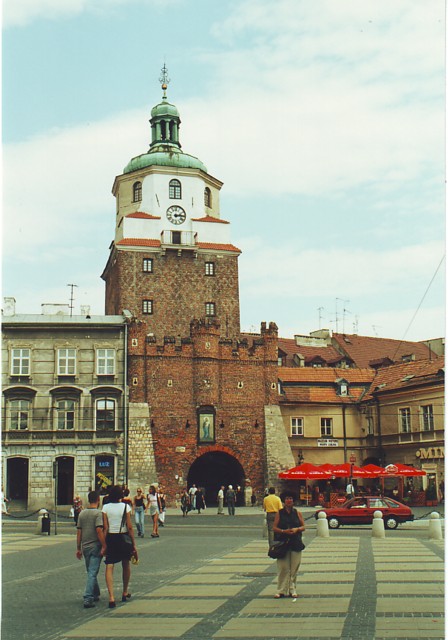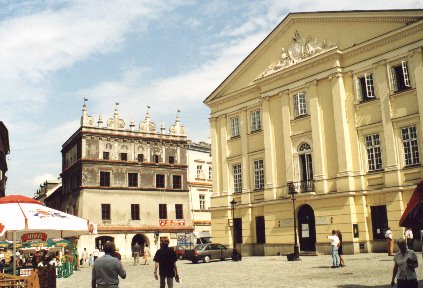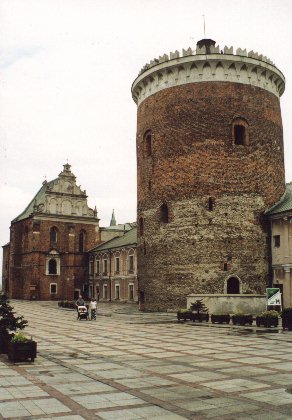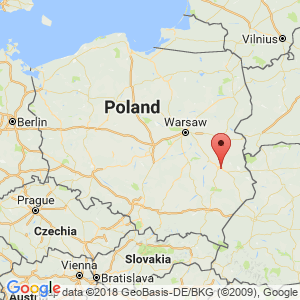Lublin
(Short edition)

Kraków Gate in Lublin, built in 1341
Distance
Population
348.450 (2010)

From the old town
Location and history
Lublin, Poland's largest city east of Wisła, lies on the Bystrzyca River on the Lublin plateau at an altitude of 170-230 meters – The city is the administrative center of Lublin County. Lublin is considered to be the oldest settlement in Poland. The first settlements date archaeologists to 6th-7th centuries. Favorable geographical conditions and a location on the main trade routes have meant that Lublin has played a significant role from the early Middle Ages on contacts between the East and the West.
In 1569, the Polish-Lithuanian Real Union, called the Lublin Union, was adopted here, and in 1578 the Crown Tribunal was moved to Lublin – it was the supreme court of appeal for the nobility in the entire Małopolska province.
Following the regained independence of Poland, in 1918, the Catholic University of Lublin was inaugurated.
Twice in its history – albeit briefly – Lublin has served as the capital: the first time in November 1918, when the interim government of the new republic was formed here; the second time was from August 1944 to January 1945, when Lublin was the capital of the liberated territories, also called Lublin-Poland (Polska lubelska).
After World War II, Lublin grew into a strong urban community with considerable economic and scientific potential.
In July 1980, the first workers' demonstrations in Lublin were a warning of the later landmark events in August in Gdańsk and Szczecin.
In 1990, the first free local elections took place.
Lublin is a friendship town with Nykøbing Falster in Denmark.
Tourist attractions
Lublin castle with city museum .

From the castle courtyard / courtyard with the castle's central tower (donation). It had both residential and defense purposes. The walls are approx. 3 m thick.

Brama Krakowska.
Krakow port.

Dominican Monastery with Abbey Church.
Panoramic view from the Krakow Gate towards the old town and city center.
The Neo-Gothic Trynitarska Tower
from which there is a beautiful view of Lublin.
The Botanical Garden .
“radość” .
- an entertainment center / playground for children

Lublin castle
Surrounding Area
Just outside the city is the Lublin Region Village Museum.
Majdanek
A few kilometers from the center, in the southeastern suburbs, is the Nazi concentration camp Majdanek from WWII.
Accommodation
Booking.com
Lublin (The city's website in Polish, English and Ukrainian)
Eateries
Lublin (The city's website in Polish, English and Ukrainian)
Other Internet sites and sources
Lublin (The city's website in Polish, English and Ukrainian)
Translated into English by Google Translate. Spangshus.dk accept no liability for any errors or omissions in translation.
Map

Rating
Search
Most used tags
churches (205) Castles (86) Monasteries (79) Town walls (74) Lakes (71) Town halls (67) Rivers (65) Castles1 (62) Mansions (55) Museums (51) Regional museums (38) Town gates (36) Abbey churches (35) Castle ruins (30) Cathedrals (26) Forests (25) Health resorts (24) Mounds (23) Water sports (23) National parks (22)Click for all tags
Denne side er også tilgængelig på dansk. This page and contents is (c) Copyright 2018- www.spangshus.dk. Based on Inviator software by ISCA Software